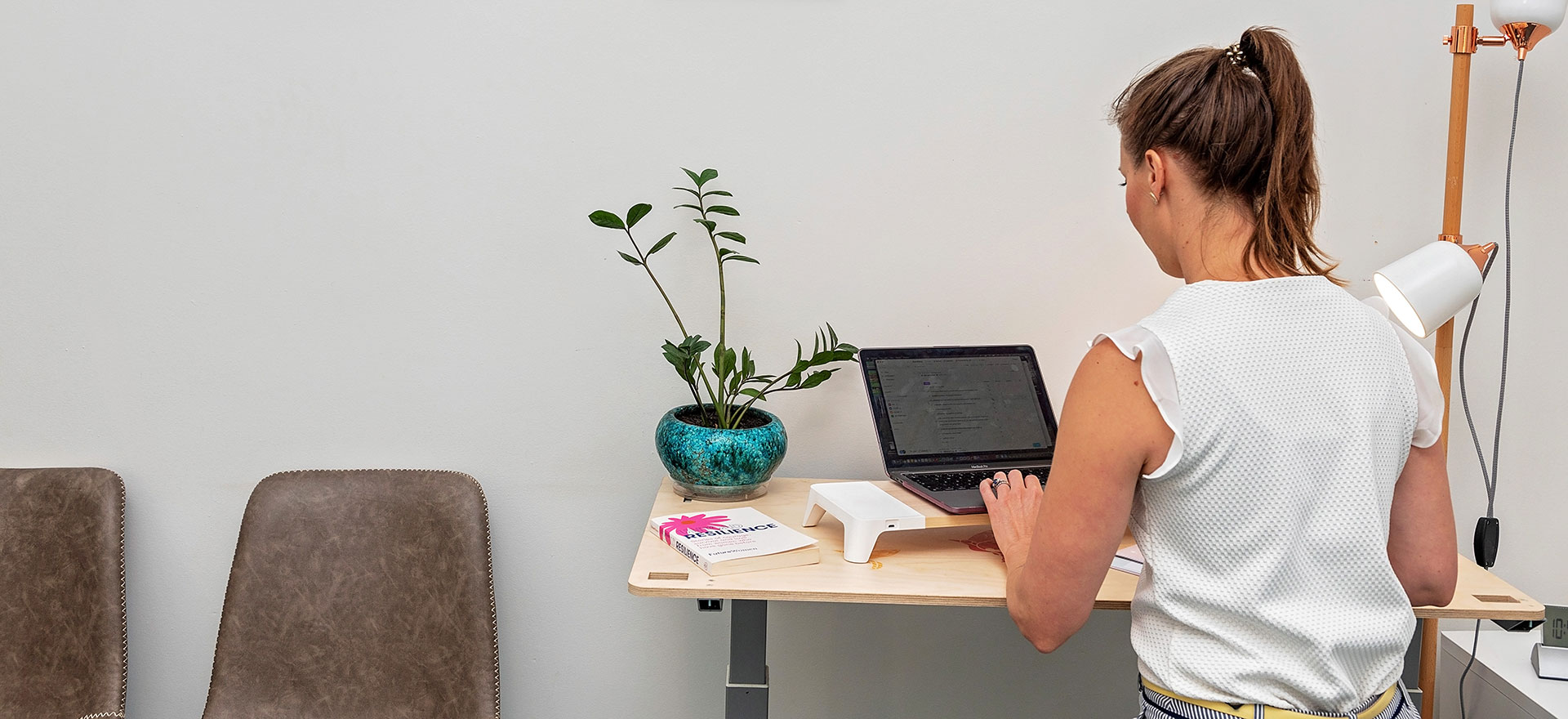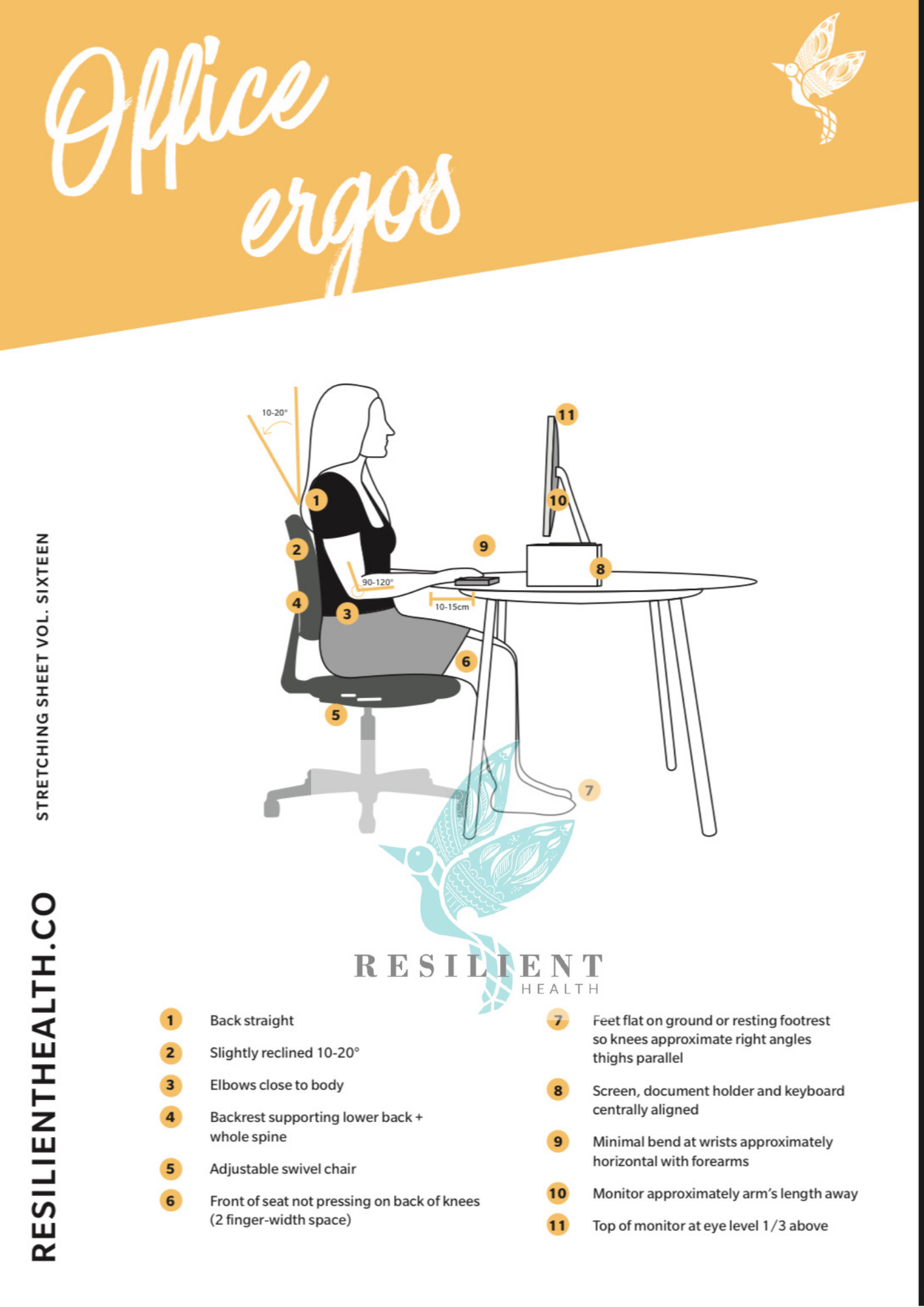5 hacks for an ANTI-FRAGILE desk set up
Written by Dr Mel Pierlot (Osteopath)
With the advances in technology and office flexibility changes, we are spending an increasing amount of time working at our desks and in sedentary jobs. Although desk work may seem like a good rest for the body, sitting at desks for prolonged periods can cumulate stress on the body and may result in low back pain, tennis elbow, headaches, neck, jaw or shoulder pain.
DID you know that musculoskeletal disorders account for a large propportion pf workplace compensation and result on approximately 15 - 22 percent of workplace sick leave?
A Cochrane review looking at sit and stand desks in 2016 reported that those who use sit and stand desks will sit 30 minutes to two hours less per day than those who use sitting desks. The same review reported standing more did not produce any negative effects with regards to musculoskeletal pain, varicose veins, or reduced productivity.
BUT, if you are using a sit and stand desk, PLEASE ensure that you seek education on sit/stand postures to adopt, footwear advice, or anti-fatigue mat considerations as a manual handling hazard.
DON'T have a sit and stand desk.... THAT'S OKAY!
Keep reading, this part is for you:
Have you noticed how stiff and sore your shoulders can get when you lean on your elbow for too long?
The same thing is occurring in your body when sitting at your desk for extended periods!
SO!
Making minor adjustments to your habits and desk set up can have a profound effect on the health of your joints and productivity of your work.
Both physical and non-physical musculoskeletal risk fasctors come into play:
Work posture and movements
Repetition and pace of work
Force of movements
Environmental factors such as temperature
Lack of influence or control over one's job
Lack of or poor communication
Monotonous tasks
Perception of low support
BEFORE YOU START!
Take a deep breath! We think that you probably haven't been doing that... so remember, deep breathing reduces your body's stress response... If you're checking emails or focussing on an important ... or even a less important task... get into the mindset of BREATHING! Its really does improve EVERYTHING!
Here are some quick tips you can implement to help that body of yours out- it will love you for it!
1. Set up a reminder:
It is easy to spend a whole day engrossed in your work without taking a moment to see how your body is feeling. Set up a 40 minute timer on your phone, or put up a sticky note somewhere on your desk. When the timer goes off stop your work, relax your shoulders away from your ears, relax your jaw, sit up tall, take a deep breath, then keep working. With consistency, this habit of stopping to adjust and relax the body will soon become subconscious!
2. Adjust your chair height:
Your chair height should allow your hips and knees to be at 90 degrees, feet flat on the ground and forearms at the level of the desk or slightly extended. If this is not possible you may need a foot stool or to adjust the tilt of your seat pan.
3. Adjust your screen(s):
Your monitor screen (s) - yes we know that you CAN HAVE TWO OR THREE! (*facepalm*) should be an arms length away with the top third of the screen directly in line with your eye level. If your screen is not adjustable, use books to elevate it, or if you work from a laptop, consider getting a separate keyboard to allow your screen to move further back and up.
4. Adjust your keyboard and mouse:
Ensure that your keyboard and mouse are directly in front of you and not to one side. Your keyboard and mouse should allow your elbows to stay by your side without over-extending.
5. Get up and move!
Our bodies are designed to move! Any time you feel yourself shifting in your seat or getting uncomfortable, get up and have a stretch. Create connections with your work colleagues by getting up to speak with them rather than emailing, use your breaks to go for walks, and have your lunch in a separate room. Sitting is the new smoking, so anything you can do to limit it will be doing your body a great service!
See you in the clinic!
The Resilient Health Team
We also thought this infographic we have prepared (with the help of The Jaques Studio!) might be useful! :D
REFERENCES:
Cochrane review - https://www.cochrane.org/news/health-effects-sit-and-stand-desks-ant-interventions-aimed-reduced-sitting-work-are-still-unproven
The business cases for reducing sedentary work practice, Australian Government, Comcare
Chau, J.Y. et al. More standing and just as productive: Effects of a sit-stand desk intervention on call center workers sitting, standing, and productivity of work in the opt to stand pilot study. Preventative Medicine, 2016, pp. 68-74

